External links
| | This comic strip–related article is a stub. You can help Wikipedia by expanding it. |
Brainwaves is a single-panel cartoon series by Betsy Streeter. Brainwaves has been described as "a single-panel stream of consciousness about the infinite absurdity of everyday life."[ citation needed ]
Brainwaves began in 1993 as single cartoons published by King Features Syndicate through their feature, The New Breed. After that, Brainwaves began to appear in numerous books and periodicals, including the Newport News Daily Press . For a time Brainwaves was syndicated online by the Universal Press Syndicate on its GoComics site. Many Brainwaves cartoons are currently available through the agency CartoonStock.com (located in the United Kingdom).
There are two Brainwaves book collections: Brainwaves: The First Wave (Drooly Dog Features, 2005) and Brainwaves While U Wait (Drooly Dog Features, 2006).
Streeter, who hails from Northern California, is a regular contributor to the Funny Times .

A comic strip is a sequence of drawings, often cartoon, arranged in interrelated panels to display brief humor or form a narrative, often serialized, with text in balloons and captions. Traditionally, throughout the 20th and into the 21st century, these have been published in newspapers and magazines, with daily horizontal strips printed in black-and-white in newspapers, while Sunday papers offered longer sequences in special color comics sections. With the advent of the internet, online comic strips began to appear as webcomics.

The Far Side is a single-panel comic created by Gary Larson and syndicated by Chronicle Features and then Universal Press Syndicate, which ran from December 31, 1979, to January 1, 1995. Its surrealistic humor is often based on uncomfortable social situations, improbable events, an anthropomorphic view of the world, logical fallacies, impending bizarre disasters, references to proverbs, or the search for meaning in life. Larson's frequent use of animals and nature in the comic is popularly attributed to his background in biology. The Far Side was ultimately carried by more than 1,900 daily newspapers, translated into 17 languages, and collected into calendars, greeting cards, and 23 compilation books, and reruns are still carried in many newspapers. After a 25-year hiatus, in July 2020 Larson began drawing new Far Side strips offered through the comic's official website.
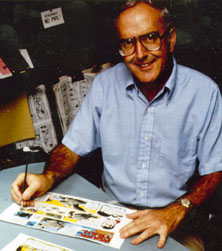
A cartoonist, also known as a comic strip creator, comic book artist, graphic novel artist, or comic book illustrator, is a visual artist who specializes in drawing cartoons or comics. Cartoonists include artists who handle all aspects of the work and those who contribute only part of the production. Cartoonists may work in a variety of formats, including booklets, comic strips, comic books, editorial cartoons, graphic novels, manuals, gag cartoons, illustrations, storyboards, posters, shirts, books, advertisements, greeting cards, magazines, newspapers, and video game packaging.
Randy Glasbergen was an American cartoonist and humorous illustrator best known for three decades of newspaper syndication as well as a freelance career. He produced the syndicated strip The Better Half from 1982 to 2014.

The Family Circus is a syndicated comic strip created by cartoonist Bil Keane and, since Bil's death in 2011, is currently written, inked, and colored by his son, Jeff Keane. The strip generally uses a single captioned panel with a round border, hence the original name of the series, which was changed following objections from the magazine Family Circle. The series debuted on February 29, 1960, and has been in continuous production ever since. According to publisher King Features Syndicate, it is the most widely syndicated cartoon panel in the world, appearing in 1,500 newspapers. Compilations of Family Circus comic strips have sold over 13 million copies worldwide.

LeRoy Robert Ripley was an American cartoonist, entrepreneur and amateur anthropologist who is known for creating the Ripley's Believe It or Not! newspaper panel series, television show and radio show which feature odd facts from around the world.
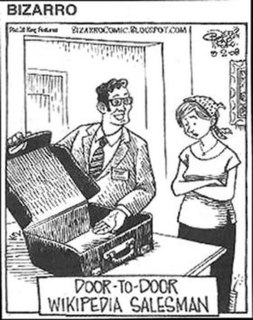
Bizarro is a single-panel cartoon written and drawn by cartoonist Dan Piraro.
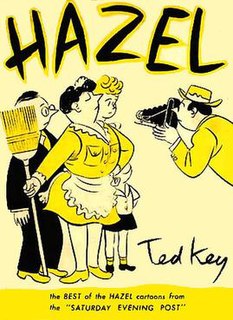
Hazel was a single-panel cartoon series by Ted Key about a live-in maid who works for a middle-class family. Launched in 1943, Hazel ended September 29, 2018.

King Features Syndicate, Inc., is a print syndication company owned by Hearst Communications that distributes about 150 comic strips, newspaper columns, editorial cartoons, puzzles, and games to nearly 5,000 newspapers worldwide. King Features Syndicate is a unit of Hearst Holdings, Inc., which combines the Hearst Corporation's cable-network partnerships, television programming and distribution activities, and syndication companies. King Features' affiliate syndicates are North America Syndicate and Cowles Syndicate. Each week, Reed Brennan Media Associates, a unit of Hearst, edits and distributes more than 200 features for King Features.
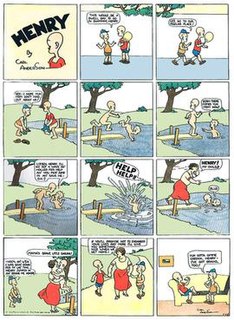
Henry was a comic strip created in 1932 by Carl Thomas Anderson. The title character is a young bald boy who is mute. With the exception of a few early episodes, the comic strip character communicates only through pantomime, a situation which changed when Henry moved into comic books.
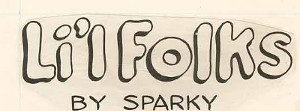
Li'l Folks, the first comic strip by Peanuts creator Charles M. Schulz, was a weekly panel that appeared mainly in Schulz's hometown paper, the St. Paul Pioneer Press, from June 22, 1947, to January 22, 1950. Schulz's first regular cartoon, Li'l Folks can be regarded as an embryonic version of Peanuts, containing characters and themes which were to reappear in the later strip: a well-dressed young boy with a fondness for Beethoven, à la Schroeder; a dog with a resemblance to Snoopy; and a boy named Charlie Brown.

The Lockhorns is a United States single-panel cartoon created September 9, 1968 by Bill Hoest and distributed by King Features Syndicate to 500 newspapers in 23 countries. It is continued today by Bunny Hoest and John Reiner.
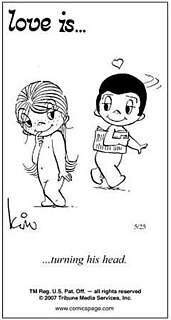
Love Is... is a comic strip created by New Zealand cartoonist Kim Casali in the 1960s. The cartoons originated from a series of love notes that Grove drew for her future husband, Roberto Casali. They were published in booklets in the late 1960s before appearing in strip form in a newspaper in 1970, under the pen name "Kim". They were syndicated soon after and the strip is syndicated worldwide today by Tribune Content Agency. One of her most famous drawings, "Love Is...being able to say you are sorry", published on February 9, 1972, was marketed internationally for many years in print, on cards and on souvenirs. The beginning of the strip coincided closely with the 1970 film Love Story. The film's signature line is "Love means never having to say you're sorry." At the height of their popularity in the early to mid 1970s, the cartoons were earning Casali around five to six million dollars annually.
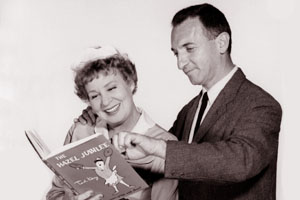
Ted Key, was an American cartoonist and writer. He is best known as the creator of the cartoon panel Hazel, which was later the basis for a television series of the same name, and also the creator of Peabody's Improbable History animated segments.
Ballard Street was a comic panel created by Jerry Van Amerongen and distributed by Creators Syndicate that ran between 1991 and 2019.
Glenn McCoy is a conservative American cartoonist, whose work includes the comic strip The Duplex and the daily panel he does with his brother Gary entitled The Flying McCoys. McCoy previously produced editorial cartoons until May 2018, when he refocused his career on animations after being discharged from his job of 22 years at the Belleville News-Democrat. All three cartoon features are syndicated by Andrews McMeel Syndication.

Reg'lar Fellers was a long-running newspaper comic strip adapted into a feature film, a radio series on the NBC Red Network, and two animated cartoons. Created by Gene Byrnes (1889–1974), the comic strip offered a humorous look at a gang of suburban children. Syndicated from 1917 to January 18, 1949, Byrnes' strip was collected into several books. Branding also extended to such items as baseball bats and breakfast cereal.
Richard Gordon Guindon is an American cartoonist best known for his gag panel, Guindon. Guindon's cartoons have appeared in the Minneapolis Tribune, The Realist, and the Detroit Free Press.

ArcaMax Publishing is a privately owned, American syndication news publisher that provides editorial content, columns & features, comic strips, and editorial cartoons via email. Labeled the "premier publisher of consumer syndicated content online," ArcaMax also produces co-branded newsletters with corporate clients.
Hilary B. Price is an American cartoonist. She is known for creating the comic strip Rhymes with Orange, which is published digitally on her website and in over one hundred newspapers across the country. At the age of 25 she became the youngest cartoonist to ever be nationally syndicated. She won the Silver Reuben for "Best Newspaper Panel Cartoon" from the National Cartoonists Society four times, in 2007 and 2009, 2012 and 2014.